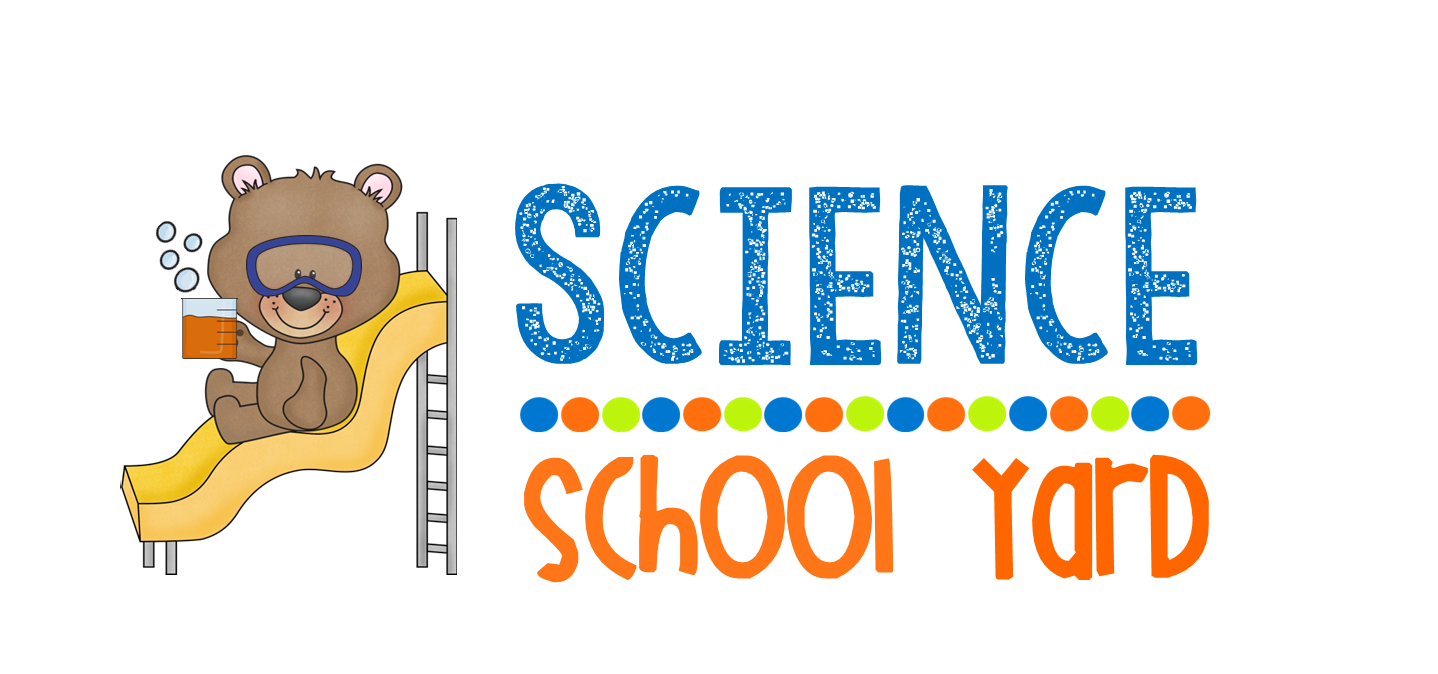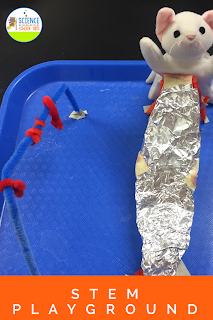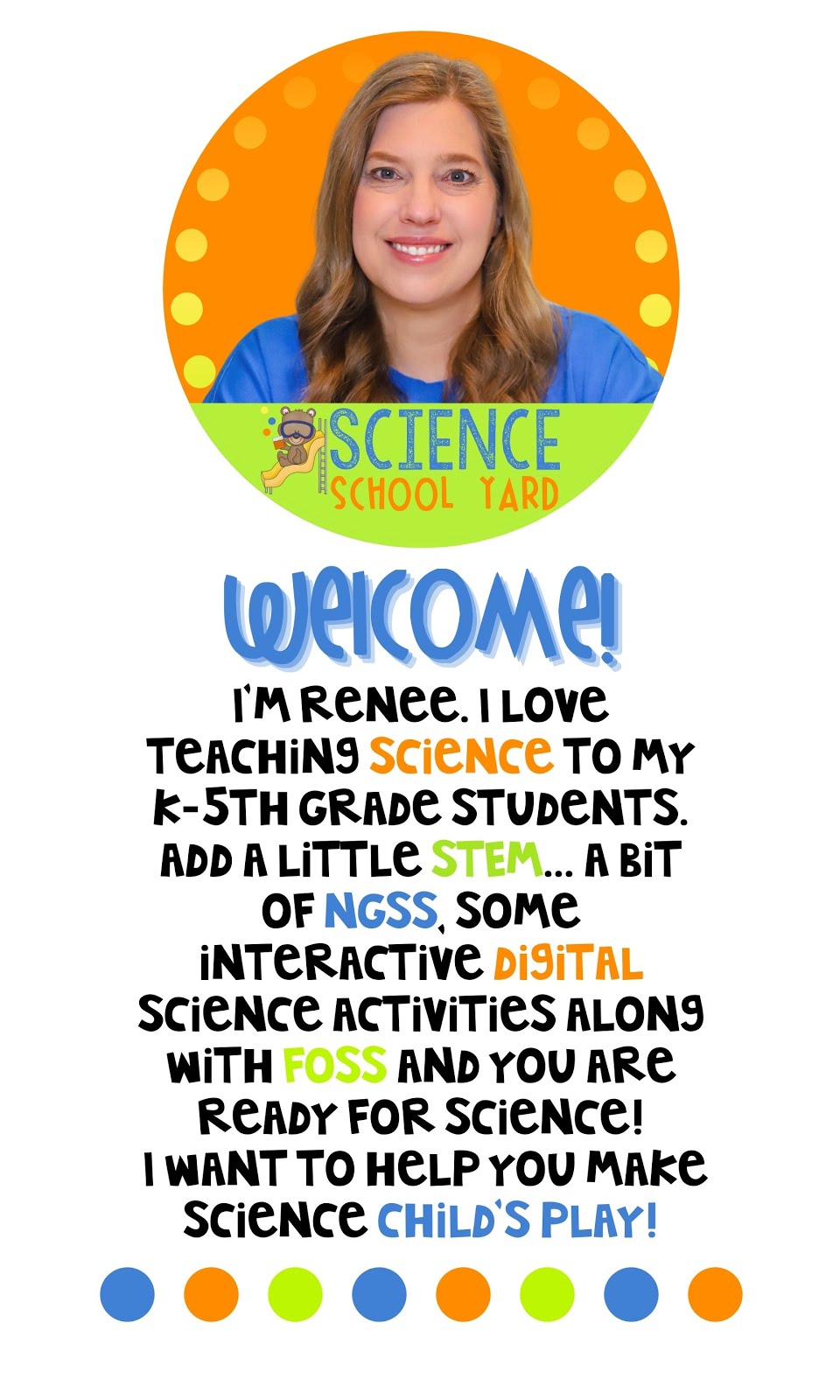When the new school year rolls around everyone gets so very busy setting up their lessons and prepping for open house. To help you see how to start your science lessons in kindergarten through fifth grade classrooms I provided my plans and links for you. Here is my Back to School Plan for each of my classes:
Kindergarten
What is Science? I love that book as a great beginning activity for littles. We read the book, make a list of what we saw on each page then I use a magnifying glass to have them take a closer look at one of the ideas we wrote and I illustrated on our anchor chart. Even is Science I like to find ways for students to write so the other part of the sheet has them tracing letters in a sentence! I included the sheet here for you! Grab a copy of What Is Science? HERE.
First Grade
My first graders will be busy learning about different types of Scientists by using my pack What Is A Scientist Pack and Measurement Review found here. It is filled with a power point, station cards and hands on activities to review tools scientists might use, a record sheet, and a bulletin board starter to get Science Concepts visual right away as we get back to school!
I set up the station cards in order around the room. I demonstrate each station to the students and then I give them time at each station and then the timer goes off.
One of my favorites is the hand lens activity...small pictures can only be seen using a hand lens. I love how they are surprised to be able to figure it out.
Second Grade
When you find something that fits right and helps start your lessons on property words and great review for our matter unit you just have to use it! So last year I found this free resource from Beth Van on TPT which I renamed. She calls it Cat's In the Bag. I fill 8 bags with one item each. Use the tags, copy the sheet that works for our second graders. Then, I set some heavy ground rules.
We learn about the saying "Don't Let The Cat Out of the Bag". We say it is everyone's job to NOT share what they felt in the bag. Everything is a BIG secret and at the end they can take a guess as to what is in the bag.
They can NOT poke holes in the bag or break the bag in any way. When we head to another table, we are also having kiddos inspect the bag for damage. Any damage may result in the time out of the last person that had the bag. I also give privacy folders for their own private area and we also discuss why we don't cheat.
When time is up, we sit together in our circle and share property words...not what we think is in the bag...YET! We are trying to focus on words that describe objects such as solids. Then, we say one...two...three "Let the Cat Out of the Bag". They can turn and share the secret or they can raise hands or all at once they can share, it is up to you. You can find her free resource here.
If someone shares early, they are asked to leave the circle because we want to respect the rules of the game. When one of them leaves the group, the others know that they shouldn't because we follow the rules.
Third Grade
In third grade, we always start off with a measurement unit. We do that to review for our FOSS Earth Materials Unit which has them measuring rocks. I found that incoming students struggled to measure circumference, width, length, and even weight. I use my measurement packs to help in that review and to make it STEM related this year I am adding a play dough activity at the end where they need to make an object a certain height, width, and diameter. We will also weigh the object they make as well. I will have a cityscape for each group that will have a theme: sweet shop, park, pet store...I can't wait to see what they make! I am hoping to have that new activity pack done this weekend. Always something on my to do list.
Here are a few stations to show you what we did with measurement...from measuring with a syringe to measuring the temperature, I tried to utilize the different tools and supplies they will be measuring with in third grade.
Find the Science Tools Stations resource here! I love the follow up game that we play with puzzle cards!
Fourth Grade
We are Saving Fred or Sam if you have ever heard of this challenge! This one is a yearly lesson for my older students. It is a great way to establish positive growth mindset as well as review the importance of working as a team. The students must work together to get a squishy life saver around the outside of a gummy worm! There is a fun scenario that goes along with it and it allows for us to really get the lesson out there that science experiments are going to need everyone to work together and not always is the outcome going to be correct or done on time in the hour we have.
I used one for years and now when I try to find the sheets on line they are gone. It happens people. So to not waste time, I went to a back up pack from More Time to Teach found here.
Fifth Grade
Once again to get us started on the scientific process and WOW was I glad I made this pack for my new classroom! In this pack I made bulletin board posters and even letters! Not to mention my first week's activity using M & M's! Want to start your year off with the Scientific Method and a great hands-on controlled experiment? Find the Teaching The Scientific Process Pack here!
I love this activity to get my older kids excited about learning how to set up a controlled experiment which we will be tackling this year!
























































